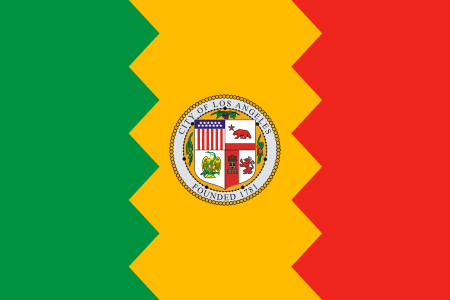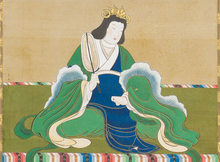Empress Suiko
| |||||||||||||||||||||||||||||||||||||||||||||
Read other articles:

Questa voce o sezione sull'argomento Servizi pubblici non cita le fonti necessarie o quelle presenti sono insufficienti. Puoi migliorare questa voce aggiungendo citazioni da fonti attendibili secondo le linee guida sull'uso delle fonti. Los Angeles Police DepartmentDipartimento di polizia di Los AngelesDescrizione generaleAttivo13 dicembre 1869 – oggi Nazione Stati Uniti ServizioPolizia TipoForza di polizia ad ordinamento civile locale con competenza limitata al territorio cittadino …

2017 South Korean television series Some of this article's listed sources may not be reliable. Please help improve this article by looking for better, more reliable sources. Unreliable citations may be challenged and removed. (May 2018) (Learn how and when to remove this message) My Father Is StrangePromotional posterHangul아버지가 이상해 GenreFamilyDramaRomanceComedyCreated byKBS Drama Production (KBS 드라마 제작국)Written byLee Jung SunDirected byLee Jae-sangCreative directorsJung…

FIFProLogo FIFProTanggal pendirian1965LokasiHoofddorp, BelandaWilayah layanan Seluruh duniaJumlah anggota 55 anggotaBahasa resmi Inggris, Prancis, SpanyolPresidenPhillipe PiatSitus webhttp://www.fifpro.org Fédération Internationale des Associations de Footballeurs Professionnels (bahasa Indonesia: Federasi Internasional Asosiasi Pesepak Bola Profesional), biasa disebut sebagai FIFPro, adalah organisasi perwakilan di seluruh dunia untuk 65.000 pemain sepak bola profesional. FIFPro, dengan k…

Norwegian actress and stage director You can help expand this article with text translated from the corresponding article in Norwegian. (December 2013) Click [show] for important translation instructions. Machine translation, like DeepL or Google Translate, is a useful starting point for translations, but translators must revise errors as necessary and confirm that the translation is accurate, rather than simply copy-pasting machine-translated text into the English Wikipedia. Consider addin…

This article has multiple issues. Please help improve it or discuss these issues on the talk page. (Learn how and when to remove these template messages) This article needs additional citations for verification. Please help improve this article by adding citations to reliable sources. Unsourced material may be challenged and removed.Find sources: Mass media in Malaysia – news · newspapers · books · scholar · JSTOR (August 2023) (Learn how and when to remo…

العلاقات اليونانية البوتسوانية اليونان بوتسوانا اليونان بوتسوانا تعديل مصدري - تعديل العلاقات اليونانية البوتسوانية هي العلاقات الثنائية التي تجمع بين اليونان وبوتسوانا.[1][2][3][4][5] مقارنة بين البلدين هذه مقارنة عامة ومرجعية للدولتين: �…

City in Veneto, Italy Comune in Veneto, ItalyMontebellunaComuneCittà di Montebelluna Coat of armsLocation of Montebelluna MontebellunaLocation of Montebelluna in ItalyShow map of ItalyMontebellunaMontebelluna (Veneto)Show map of VenetoCoordinates: 45°46′31″N 12°02′20″E / 45.77528°N 12.03889°E / 45.77528; 12.03889CountryItalyRegionVenetoProvinceTreviso (TV)FrazioniBusta, Biadene, San Gaetano, Sant'Andrea, Mercato Vecchio, Caonada, Contea, Posmon, La Pieve, Gua…

American jazz musician (1922–1979) Charles MingusMingus in 1976Background informationBirth nameCharles Mingus Jr.Born(1922-04-22)April 22, 1922Nogales, Arizona, U.S.OriginLos Angeles, California, U.S.DiedJanuary 5, 1979(1979-01-05) (aged 56)Cuernavaca, MexicoGenresJazzhard bopbebopavant-garde jazzpost-bopthird streamorchestral jazzfree jazzOccupation(s)MusiciancomposerbandleaderInstrument(s)Double basspianoYears active1943–1979LabelsAtlanticCandidColumbiaDebutImpulse!MercuryUnited Artis…

American full-size automobile Motor vehicle Chevrolet Bel Air1957 Chevrolet Bel Air convertibleOverviewManufacturerChevrolet (General Motors)Production1949–1980Model years1950–1981Body and chassisClassFull-sizeLayoutFR layoutChronologyPredecessorChevrolet FleetlineChevrolet BiscayneSuccessorChevrolet Impala The Chevrolet Bel Air is a full-size car produced by Chevrolet for the 1950–1981 model years. Initially, only the two-door hardtops in the Chevrolet model range were designated wit…

Pour le R&B contemporain, voir RnB contemporain. Rhythm and blues Données clés Origines stylistiques Jazz, blues, boogie-woogie, jump blues, swing Origines culturelles Début des années 1940 aux États-Unis Instruments typiques Chant, basse, batterie, guitare, piano, saxophone Popularité Significative des années 1940 aux années 1960 ; iconique après hors RnB contemporain Scènes régionales La Nouvelle-Orléans Sous-genres RnB contemporain, smooth jazz, neo soul Genres dérivés …

Землетрясение на острове Крит 35°43′44″ с. ш. 26°27′18″ в. д.HGЯO Дата и время (13:29:12 UTC) 1 апреля 2011 года Магнитуда по шкале Рихтера 6,2Mw[1] Глубина гипоцентра 78 км Затронутые страны (регионы) Греция, Египет, Израиль, Мальта Цунами Нет Пострадавшие нет дан…

Questa voce sugli argomenti isole d'Italia e Venezia è solo un abbozzo. Contribuisci a migliorarla secondo le convenzioni di Wikipedia. Segui i suggerimenti del progetto di riferimento. Sant'AndreaVista dell'isola dal Porto di San Nicolò al LidoGeografia fisicaLocalizzazioneLaguna Veneta Coordinate45°26′04″N 12°22′52″E45°26′04″N, 12°22′52″E Geografia politicaStato Italia Regione Veneto Città metropolitana Venezia Comune Venezia MunicipalitàVenezia-Mura…

Cancerous tumor originating in the stomach lining Medical conditionStomach cancerOther namesGastric cancerA stomach ulcer that was diagnosed as cancer on biopsy and surgically removedSpecialtyGastroenterology OncologySymptomsEarly: Heartburnbloatingupper abdominal painnauseabelchingloss of appetite[1]Later: Weight lossyellowing of the skin and whites of the eyesvomiting blooddifficulty swallowingblood in the stool[1]Usual onsetOver years[2]TypesGastric carcinomas, lymphom…

Lower House of the Parliament of Bermuda House of Assembly of Bermuda12th Modern Bermudian ParliamentTypeTypeLower house of the Parliament of Bermuda HistoryFounded1 August 1620 (original unicameral house)2 June 1968 (modern bicameral Parliament)LeadershipSpeakerDennis Lister, PLP since 8 September 2017 Deputy SpeakerDerrick Burgess, PLP since 8 September 2017 PremierEdward David Burt, PLP since 19 July 2017 Leader of the OppositionCole Simons, OBA since 2 November 2020 Structure…

Season of television series Yu-Gi-Oh! 5D's:Fight for the FutureSeason 5No. of episodes20 (only 2 dubbed)ReleaseOriginal networkTV TokyoOriginal releaseNovember 17, 2010 (2010-11-17) –March 30, 2011 (2011-03-30)Season chronology← PreviousSeason 4Next →Yu-Gi-Oh! ZexalSeason 1 List of episodes The fifth and final season of Yu-Gi-Oh! 5D's lasts from episodes 135 to 154 (with the title Fight for the Future, in the English dub). As the Ark Cradle (also known as the Divin…

Musei Vaticani Ingresso al museo su viale Vaticano, in territorio italiano UbicazioneStato Città del Vaticano LocalitàCittà del Vaticano IndirizzoViale Vaticano 6, I-00192, Roma Coordinate41°54′23″N 12°27′16″E41°54′23″N, 12°27′16″E CaratteristicheTipoarcheologia, pittura, scultura, filatelia e numismatica Istituzione1506 FondatoriPapa Giulio II Apertura1771 DirettoreBarbara Jatta Visitatori6,764,858 (2023)[1] Sito web Modifica dati su Wikidata · Manuale …

إبراهيم سيسوكو معلومات شخصية الميلاد 27 نوفمبر 1995 (29 سنة) كريتاي الطول 1.90 م (6 قدم 3 بوصة) مركز اللعب مهاجم الجنسية فرنسا مالي معلومات النادي النادي الحالي سوشو الرقم 9 مسيرة الشباب سنوات فريق 2008–2014 إنتينت المسيرة الاحترافية1 سنوات فريق م. (هـ.) 2014–2017 إنتينت…

Some of this article's listed sources may not be reliable. Please help improve this article by looking for better, more reliable sources. Unreliable citations may be challenged and removed. (November 2015) (Learn how and when to remove this message) ILNumericsDeveloper(s)ILNumericsStable releasev6.0 / July 20, 2022; 2 years ago (2022-07-20) Written inC#, Visual BasicOperating system.NET Framework / Mono, Windows, Linux, MacOSPlatformIA-32, x86-64, AnyCPUTypeTechnical computing,…

Voce principale: II Giochi della Croce del Sud. I tornei di pallavolo ai II Giochi della Croce del Sud si sono disputati durante la II edizione dei Giochi della Croce del Sud, che si è svolta a Rosario nel 1982. Indice 1 Tornei 1.1 Maschile 1.2 Femminile 2 Podi 3 Collegamenti esterni Tornei Maschile Lo stesso argomento in dettaglio: Pallavolo ai II Giochi della Croce del Sud - Torneo maschile. Femminile Lo stesso argomento in dettaglio: Pallavolo ai II Giochi della Croce del Sud - Torneo femmin…

Portuguese railway line Ramal de AlfarelosCP 0362 close to Reveles.OverviewStatusOperationalOwnerInfraestruturas de PortugalTerminiAlfarelosBifurcação de LaresServiceOperator(s)Comboios de PortugalTechnicalLine length16.5 km (10.3 mi)Track gaugeIberianElectrification25 kV / 50 kHz Overhead line Route map Location on the network + Alfarelos × B. de Lares (🔎) vteAlfarelos branch Legend km000 Lengthin m Linha do Norteto Campanhã 221.380 Alfarelos Linha do N…




